September 10, 2020
From the Vault: Engine Room Signal Gear
A spotlight on an exciting recent acquisition for the HMM artifact collection

Telegraphs Onboard?
Why would one need a "telegraph" system onboard a boat? Well, imagine owning a car in which you could steer from the driver's seat, but the gas and brake were both controlled by someone locked in the trunk* who could not see where you were going. Clear communication between the trunk and the driver's seat becomes very important very quickly! This was what operating large power vessels was like during the HMCo. era. The engineers tending the engines and controlling the speed and direction of the propeller where not in the same part of the boat as the captain, who could see where they were going and controlled the rudder. Captains and engineers were further separated by bulkheads, boilers, and the noise of the engine.
Watch this short video of the Mystic Seaport Museum's passenger-carrying steamboat SABINO to get a sense of the careful teamwork and communication required to operate a passenger steamer.
The Bell System
A communication system was therefore a vital requirement for operation. The captain looking out and steering from the pilothouse needed to be able to effectively direct the engineers in the noisy, far-away engine room to speed up, slow down, reverse, or go forward. On steam vessels especially, the engines and boilers took up a large amount of space onboard, and required constant tending from a professional crew of engineers, so they couldn't exactly run back and forth to get orders either. To solve this problem on some vessels (see SABINO above, for example) the captain and engineer communicated with one another through ringing bells a certain number of times to indicate an agreed-upon set of instructions. On many auxiliary, steam, or gas powered Herreshoff vessels, the system was a bit more sophisticated and involved engine room signal gear, also known as an engine order telegraph (or sometimes also called as "chadburns" in the case of the pedestal type brand that came into use in the 1870s). These systems had dials and indicators and alarm bells, so that you could see and hear the orders from the pilothouse to the engine room. There were also two sets of indicators on the plates so that the captain could send orders and the engineers could also send confirmation back. These signal gear assemblies could be quite lovely to look at, with functional elements that were also beautiful, elegant cast or enameled lettering, or other decorative elements and finishes.
HMCo. Signal Gear
We recently acquired a partly intact engine room signal assembly for the collection. Though there are handful of plans in the MIT collection showing similar signal gear assemblies, we believe ours dates to sometime after 1918, as the lead hammer profile and lettering most closely resemble this particular 1918 plan from the Haffenreffer-Herreshoff Collection at the MIT Museum (see above). There are still some discrepancies between the drawing and artifact however, so research remains to be done! A few elements are also missing on the actual artifact, unfortunately, such as the main dial arm and the return signal piece. Still, it is a rare and wonderful piece of Herreshoff history that we are very excited to have in the collection today. In addition to being a rather lovely thing to look at, we may have accidentally rung the bell (truly accidentally!) when it first arrived, and the bells made a surprisingly pleasant tone. We'll post a video when or if we get around to ringing it again...
There are other signal gear drawings in the Haffenreffer-Herreshoff Collection at the MIT Museum and they are a lot of fun to look at. Take for example the Fire Room Telegraph drawing below, used for torpedo boats PORTER (HMCo. #184), DUPONT (HMCo. #185) and MORRIS (HMCo. #190). Any guesses as to what "use donkey" meant onboard a torpedo boat in the 1890s?
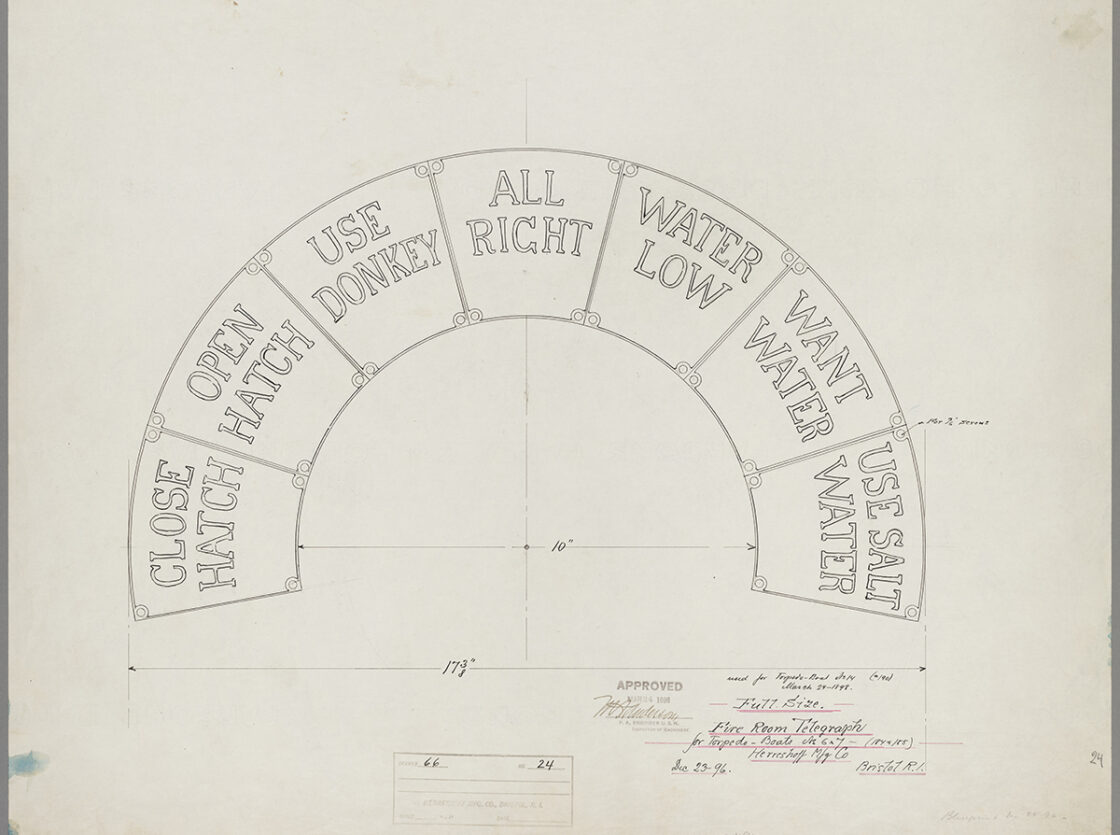
*or perhaps most accurately, under the hood with the engine itself

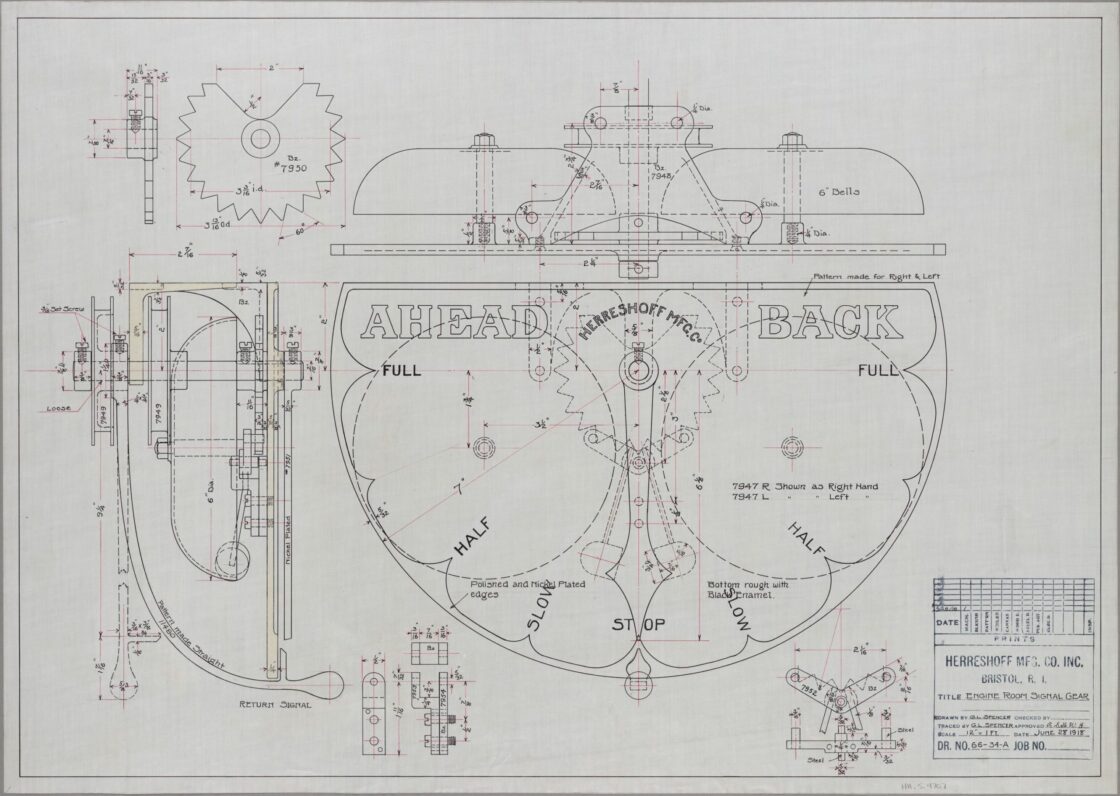
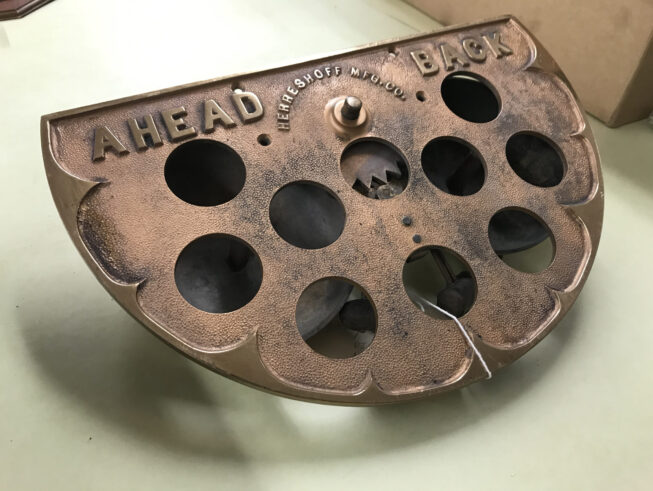
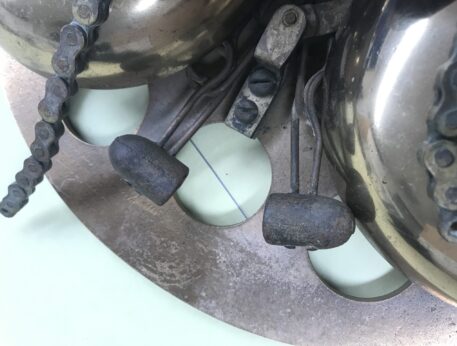
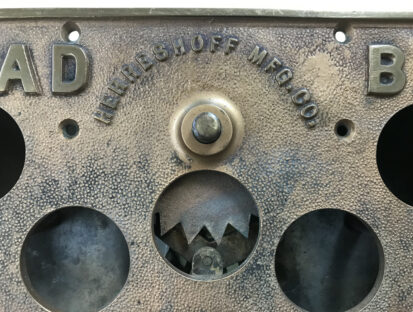

Donkey engines are small auxiliaries – perhaps used to load torpedoes onto the boat, or load the active tube ?
Regards from Bristol Harbor, and thank you for these interesting articles.